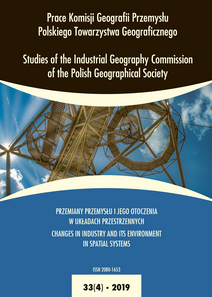Podobieństwo struktur zatrudnienia w krajach Unii Europejskiej w latach 2008–2017 – ocena dynamiki
Similarities in Employment Structure of the European Union Countries in the Years 2008–2017 – Assessment of Dynamics
Author(s): Małgorzata Markowska, Danuta Strahl, Elżbieta Sobczak, Petr HlaváčekSubject(s): Labor relations, Transformation Period (1990 - 2010), Present Times (2010 - today), EU-Approach / EU-Accession / EU-Development, Human Resources in Economy, Socio-Economic Research
Published by: Wydawnictwo Uniwersytetu Komisji Edukacji Narodowej w Krakowie
Keywords: employment; EU countries; European Union; structures;
Summary/Abstract: The aim of the paper is to identify groups of European Union countries similar in terms of employment structures, applying the furthest neighbour agglomerative clustering procedure with dynamic approach. The employment data for UE countries is reported in 10 sections: agriculture, industry, construction, trade, information, finance and insurance, real estate, professional services, administration, culture. A research presented covers the period of 2008–2017. Distance matrices for the dissimilarity of employment structures in EU countries have been calculated separately for each year. Then, the furthest neighbour method has been applied (which is next to Ward method in group identification efficiency) with the critical agglomerative distance of 0.15. It means that two groups can be merged if the furthest distance between objects belonging to different groups is not bigger than 0.15. Cutting dendrograms in this way we found that the resulting groups of countries for consecutive years are rather similar. Luxemburg and Romania formed a single -object groups in every year. Three main groups have been identified within other EU countries. Dynamics of these groups content, and average structures is discussed.
Journal: Prace Komisji Geografii Przemysłu Polskiego Towarzystwa Geograficznego
- Issue Year: 33/2019
- Issue No: 4
- Page Range: 283-294
- Page Count: 12
- Language: Polish

